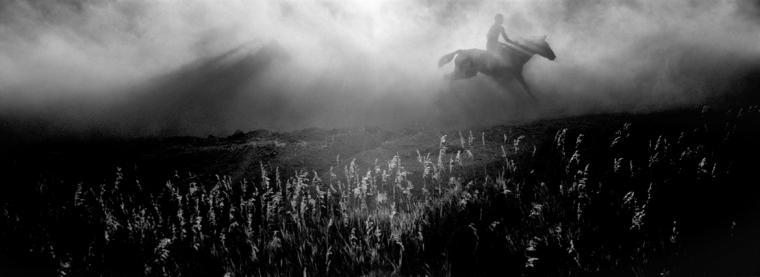
A few years ago, while in the South Dakota Badlands, still photographer, photojournalist, filmmaker, LeClaire native, and current Iowa City resident Danny Wilcox Frazier met John and Julie – married ranchers whose daily lives he wanted to document in photographs. Frazier explained his intentions to the couple, and they agreed to take part. But as Frazier says during our recent phone interview, there was a caveat.
“I said, ‘There’s one thing you need to know before we start: How I work is I move in.’ And Julie was like, ‘Uh-h-h-h ... oka-a-a-ay ... . Are you saying you need somewhere to sleep tonight?’ And I said, ‘Well, yeah, that’d be great!’ Because at that point, I was sleeping in the back of my truck. I’d find a place, get a few hours sleep, wake up with the sun, and start shooting again.
“But more importantly,” he continues, “I wanted them to understand how I work – how I wanted to be there for everything.”
Two years after his initial photographing of John and Julie, Frazier found himself in the same Badlands region, with the same hosts, and dining with them on the now-cooked pheasant he shot during an excursion with the couple earlier that day. “And Julie started laughing,” says Frazier. “And I’m like, ‘Why are you laughing?’ And she said, ‘You know, two years ago, when you said you were gonna move in, we didn’t know you actually meant it.’”
Frazier himself laughs. “And I kind of kicked my legs back. ‘Yeah. I’m pretty comfortable here now.’”
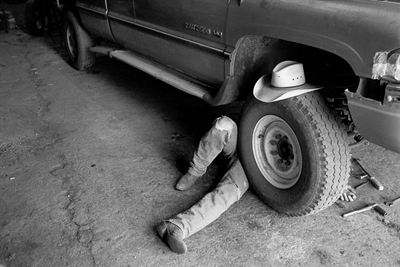
Over the course of his career, Frazier’s worldwide assignment work has been showcased in Time, Newsweek, National Geographic, Harper’s, The New Yorker, The Atlantic, Mother Jones, and London’s Sunday Times Magazine. Features on his output have appeared in the New York Times, Finland’s Photo Raw, Germany’s LFI, and Italy’s RearViewMirror magazine. His photographs are in collections housed in Houston’s Museum of Fine Arts, the Philadelphia Museum of Art, and the Smithsonian’s National Museum of American History.
Yet even given his global travels, accomplishments, and accolades, Frazier’s primary focus – and clearly his comfort zone – continue to be on and in America’s marginalized communities, principally in the Midwest, that were the inspiration for his award-winning 2007 book Driftless: Photographs from Iowa and 2009’s documentary short Driftless: Stories from Iowa. (Portions of the latter will be presented by Frazier during the Figge Art Museum’s “Cinema at the Figge” event on December 15. For more on the event, see the sidebar “Artistic Culmination and a Couple of Beers.”)
In both book and film, Frazier’s eye focuses on Iowa locales and people many others choose to ignore: the elderly farmers whose children have no interest in farming; the small-town taverns boasting the same seating, and clientele, from the 1950s; the migrant laborers seeking the smallest sliver of the American Dream. And in Frazier’s heartfelt yet clear-eyed documenting, we see things, too – maybe our neighbors, or our parents, or our grandparents. Or ourselves.
“You know, as a documentary photographer, I’m working with large themes,” says Frazier. “And what Driftless is all about is the emotional landscape of rural Iowa. It’s not specific stories about factories closing or difficulties on the farm. It’s about that feeling of loss. But also that feeling of pride – pride in one’s ability to maintain that rural lifestyle no matter how difficult it is.
“But because of my subjects,” he says, “who really become friends, and their willingness to share so much, I never feel like I’ve gone far enough. I’m like, ‘I have to push harder, there’s more to show, there’s more emotion to bring out in the photography ... .
“Ultimately, all I care about is the emotion, and it all comes through building relationships, gaining trust, and sharing of yourself. And when I set out on this project, I realized I was exactly where I was supposed to be.”
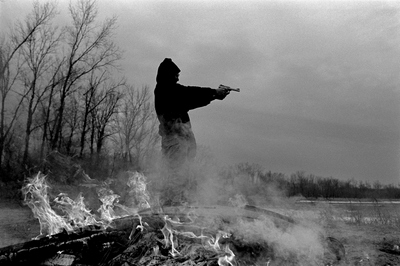
Butchering Turtles
After growing up in LeClaire and attending Pleasant Valley High School, Frazier enrolled at the University of Iowa School of Art & Art History, where he eventually majored in journalism and mass communication. But his career as a photographer was initiated through sports.
“I ran track at Iowa,” he says, “but I had a lot of injuries, and then kind of a career-ending knee injury. And it just timed out perfectly. I loved photography, and so I started taking photography classes, and it just clicked for me. On weekends, I would go home from Iowa City and spend time with family in LeClaire and Princeton, and I’d just photograph everyday life in those small towns.”
Frazier says the photographer whose images most clearly spoke to him – who made him “start to understand what I wanted to do with the rest of my life, professionally” – was Robert Frank, whose 1958 book The Americans is a revered collection of black-and-white photographs that details post-war life with a complete absence of sentimentality.
“I immediately connected to the work,” says Frazier. “The photographs made me think, ‘Wow, someone feels the same way about America as I feel.’ The feeling that you can be in a room full of people and still feel very alone, which was how I felt about my life at that point.
“You know, I’m a product of the farm crisis in the Quad Cities,” says the 46-year-old artist. “In two years, we lost 30,000 UAW jobs in the Quad City area. It was a really tough time for everyone, and my father was a small-business owner in LeClaire who somehow kept the business going through working nonstop and sacrificing as much as he could to make a living. But that all had a profound impact on me, and I think that’s when I developed my social awareness.”
With Frank’s work as added inspiration, Frazier continued his weekend photo sessions in and around his hometown. “And these photographs from LeClaire and Princeton really caught a lot of faculty and graduate students’ attention,” he says, “because it was all so foreign to them. To me, it was just everyday, small-town life – my uncle butchering a snapping turtle, friends with guns and beer. But to a lot of people at the University of Iowa, even though this was just an hour away, they hadn’t experienced any of that.”
Ironically, though, Frazier’s decision to pursue the documenting of Midwestern life as a career originated in Kenya rather than Iowa.
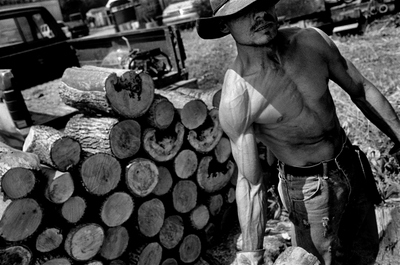
“A few months after undergrad,” he says, “and a couple weeks after my wife [Lydia] and I got married, we moved to Nairobi with the little bit of savings that we had. I started freelancing, and my wife volunteered with different organizations, and we weren’t there very long – just a year. But it opened me up to understanding where I was from, and how important the stories were in my own backyard. I didn’t have to travel halfway across the world, because I was photographing the same things there that I was here.
“When I wasn’t on assignment,” Frazier continues, “I would go to fishing villages on Lake Victoria and photograph fishermen, which was no different from the first photographs I was taking of my uncle, who was a commercial fisherman in Princeton. I was photographing these villages, and these kinds of traditional ways of life, and these everyday scenes. And I was more interested in those photographs than I was the work from northern Uganda covering the Lord’s Resistance Army, or covering a ferry accident in Tanzania.
“I mean, I knew those were important news stories. But I looked around and I saw this pack of journalists that traveled together for reasons of safety – which I completely understood – and I thought, ‘I know I can do this work, but there are other people already doing it. I want to go somewhere where people aren’t bringing light to stories, and aren’t bringing those who are living in the shadows to everyone’s view.’ I started to figure out who I was, and the kind of work I wanted to do.”
Following his bout with malaria (“I was pretty damned sick, man,” he says with a laugh) and their roughly seven-month stay in Little Rock, Arkansas, Frazier and his wife moved back to Iowa City so Lydia could begin graduate school, and he could resume his photography career and passion for documenting Midwestern life. It wasn’t long after returning that Frazier also found his inspiration for Driftless.
“I was on assignment for Mother Jones magazine,” he says, “and I was in this small café in this nowhere town in northwest Iowa. There were probably a half-dozen people in there chain-smoking and watching this fuzzy TV where the soaps were on, and their average age was probably, you know, 80. And when I sat on the cushion of this booth, the springs were all worn out. I sunk so far down I felt like I was a little kid at my parents’ dining-room table. I mean, the place just felt like slow death.
“So after I left,” continues Frazier, “I saw that everything was shuttered downtown, and I had that feeling I had while growing up: ‘I have got to get out of Iowa. This place is just dying. There’s nothing here.’ Governor [Tom] Vilsack had spoken a lot about the ‘brain drain’ in Iowa – about the state losing its best and brightest. That’s how it felt.
“But I had also been reading a lot about the depopulation of rural America, and how at that point almost half our counties were depopulating here in Iowa, and I was like, ‘No. This is where I’m supposed to be. These are the stories I’m supposed to cover. Either I’m just going to continue doing assignments, or I’m going to start investing all my time in documenting this issue from a macro perspective – not just looking at individual stories.”
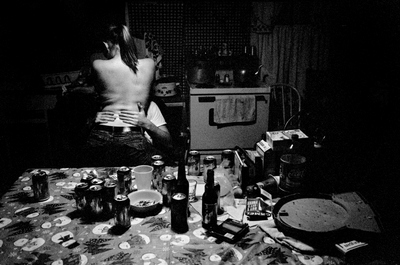
Raw Honesty
Fortunately for Frazier, he was able to subsidize his treks throughout Iowa with teaching positions through the University of Iowa School of Journalism & Mass Communication, where he went on to earn a 2004 graduate degree.
“They brought me in as a grad student,” he says, “and I had a half-time appointment to teach photography classes, and another as photography coach at the student newspaper The Daily Iowan. That’s not typical for a grad student, so it was this great opportunity.
“And I got to study in the cinema department,” he adds, “under an unbelievable experimental filmmaker by the name of Leighton Pierce who really changed how I looked at what I wanted to do. He helped me understand that I was more concerned about the emotions of a situation than in telling people what was wrong with that situation.”
As for the Iowa locales he chose to cover in his book of photographs, Frazier says, “Honestly, some days I would take my map of Iowa and kind of close my eyes and just point. I mean, I did know what region I’d be in, but I really wanted it to be random. So whatever town was close to where I was pointing, I would set out for that town. I didn’t even care if I made it to that town, because it was really about whatever I discovered along the way.
“And then it became more targeted,” he continues, “and I was looking at covering different topics. Like, I wanted to photograph on a farm where there was an elderly couple living alone, still farming well past retirement age. That’s how I ended up meeting Harry and Helen on Election Day in ’04.”
The encounter transpired at a polling place in a township between Iowa’s Solon and Sutliff, where the farming couple caught Frazier’s eye because of the tightness with which Helen grasped Harry’s hand, and the fact that they entered a private voting booth together. After they exited, Frazier explained to the couple his wish to photograph them, and was invited, by Harry, to spend time at their farm.
But after the photographer arrived, following about a half-hour of kitchen-table conversation, Harry said he needed to tend to his cattle, and asked Frazier if he’d stay inside with Helen. “And as soon as he walked out the door,”says Frazier, “Helen started screaming and crying. She went into a corner and was facing the corner and just wailing. And I was like, ‘Are you okay?’ and she’s not responding.
“So I ran out the door, and I’m chasing Harry down halfway to his barn, and I’m like, ‘Harry! There’s something wrong. Helen is standing in the corner screaming and crying.’ And he looked at me and he said, ‘Danny, I just wanted you to know what every day of my life is like.’”
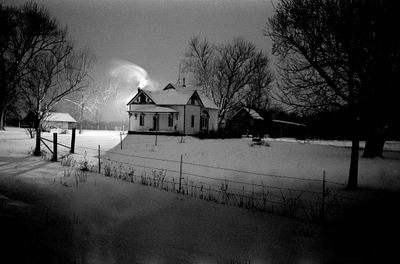
Frazier was then told that Helen was suffering from advanced Alzheimer’s, and upon returning to the house, Harry was able to momentarily soothe Helen’s nerves. “But that’s the unbelievable thing about what I do,” says Frazier. “How open and honest people are with me. Harry was like, ‘Okay, you want to document and photograph us? I want you to really know what we’re going through.’ And that’s the driving force behind what I do – the responsibility I feel to people for sharing so much with me.
“The idea of romanticizing rural life,” he continues, “the way you sometimes see it in films or painted on canvas – I’m not interested. I’m interested in a raw honesty. Yes, I want people who’ve had an urban experience to understand what life is like in these rural communities. But I really want the people in these rural communities to connect to my work. That’s who I most care about, and they aren’t gonna connect to some romanticized, fictional depiction of rural life.”
Given his desire to express emotional honesty, it only made sense to Frazier that after the publication and success of Driftless: Photographs from Iowa, he would complement it with a film in which several of his subjects could express such honesty themselves.
“Driftless the book of still photographs – that’s my statement about life in rural Iowa. That’s what I have to say. It’s all in there, and I’m very happy with the end product and the voice that it brought to the issues of rural America. But the great thing about film is it allowed subjects to speak for themselves. I mean, I’m not naïve to the subjective nature of editing and documentary filmmaking, and most definitely the subjective nature of documentary photography. But I do appreciate seeing and hearing someone talk about their experiences, so I wanted to go back and allow my subjects to tell their stories in their own voices.
“And on a practical level,” says Frazier of the Driftless: Stories from Iowa filming process, “just as far as the field work went, it was so fluid. So easy. Because the relationships weren’t photographer/subject relationships anymore. They were friendships. I mean, I’ve been photographing some of these people for four, five years. I sat around their kitchen tables, I rode in the passenger seats of their pickup trucks ... . So it just was seamless.”
Regarding the screening of Driftless segments at the Figge, and the chance to also present stills from his 2017 rural-America book project Bury Me Not on the Lone Prairie, Frazier says, “It’s extra-special, of course, because the Quad Cities is home. But it’s also important because, when I started the work, it was very hard to get anyone to pay attention at all. No one cared. They were like, ‘Rural Iowa? Why should I care about rural Iowa?!’
“But now,” he says with a slight heh-heh-heh chuckle, “everyone wants to talk about it. We’re living the fact that no one’s been paying attention to these rural areas – these great swaths, space-wise, across the country. So now everyone wants to figure out what’s gone wrong. Well, a lot has gone wrong. But there’s stuff that’s going right, too. So let’s have a real conversation.”
David Wilcox Frazier will screen segments from his documentary Driftless: Stories from Iowa at the Figge Art Museum (225 West Second Street, Davenport) during its December 15 “Cinema at the Figge” presentation. The event will feature a 5 p.m. cocktail hour, 6 p.m. film shorts and Frazier photographs accompanied by live music from The Pines, and a 7:15 p.m. screening of David Lynch’s The Straight Story. More information on the evening is available by calling (563)326-7804 or visiting FiggeArtMuseum.org.
---------------------------------------------
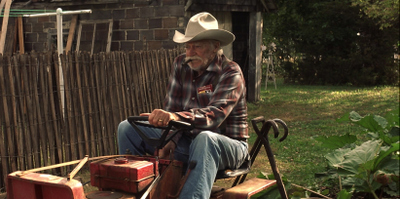
Sidebar: Artistic Culmination and a Couple of Beers
“I have a huge amount of respect for painters, musicians, still photographers, actors, people who are able to write or draw,” says photographer Joshua Ford. “I think these are some of the best things our species can reach for – artistic expression in general.
“But cinema, in a way, I look at almost as a culmination of all these different mediums. You’re dealing with composition, you’re dealing with storytelling, there’s music involved, there’s acting involved ... . It’s this amazing collaborative thing where not one artistic aspect has to be greater than another. I have a sense of it as this culmination, and when done with care it’s a really high art form.”
A sense of culmination is also what Ford is hoping to achieve with the Figge Art Museum’s “Cinema at the Figge,” a series sponsored by his company Ford Photography, with Ford (a regular contributor to the River Cities' Reader) himself serving as chief programmer. Each evening boasts a movie, as you’d imagine, but as Ford says, “I didn’t want to just say, ‘Here’s a film!’ I was trying to figure out a way to make them events, where the sum of its parts was maybe greater than the thing itself.”
What Ford, in collaboration with Figge Director of Education Melissa Mohr, envisioned was an event in which the feature presentation would serve as the climax of the night, rather than the whole night. Consequently, “Cinema at the Figge” experiences boast not just a film, but a number of shorter films, music, appetizers by Figge chefs, and specially themed beer by Wake Brewing’s Jason and Justen Parris.
With the first two “Cinema at the Figge” events (held on September 23 and October 26), Ford says the features dictated the evenings’ thematic routes.
For the series’ debut, Ford chose Jim Jarmusch’s mystery/drama The Limits of Control – a choice motivated, in large part, by Ford’s having met and spoken at length with the writer/director in 2015.
“In a way, that talk really inspired me to get this series rolling,” says Ford. “I wanted to do a tip of the cap to Jarmusch. And with Limits of Control, there’s a fair amount of travel that takes place in the film, whether by just walking or airplane or train ... . And that made me think of the Lumière brothers short film The Arrival of a Train at La Ciotat Station. So we added that, and then I found this short by Kai Carlson-Wee, who has a fellowship position at Stanford and is a poet and a lecturer and a teacher; he made a film about him and his brother hopping trains. So one thing just kind of led to another.
“Same thing with October,” he continues. “I thought we should do something that was kind of Halloween-related but not your typical slasher/gore thing. And [director Pasmos Cosmatos’] Beyond the Black Rainbow is this kind of wildly visual, sci-fi-y throwback that I loved, and again, working back from that, we found and created shorts that felt like they dovetailed with Halloween but weren’t necessarily ‘horror.’”
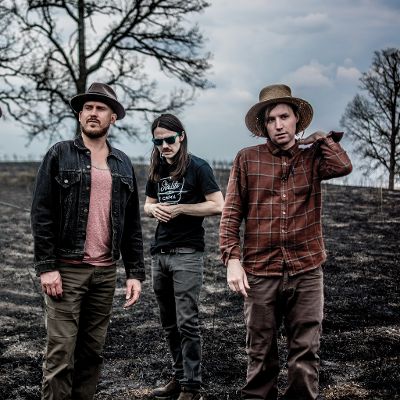
But for the “Cinema at the Figge” presentation on December 15, Ford says, “rather than starting with the feature, I knew we wanted to play Danny Wilcox Frazier shorts, and ... we could retrofit the night to dovetail with what’s going on in Danny’s work.
“I came into Danny’s work,” says Ford of the LeClaire native, “probably four or five years ago via his Driftless film, and then kind of dug backwards into his work in photojournalism, documentary, still photography ... . He’s the real deal. In terms of documenting what could be a fleeting way of life in the Midwest, from a photographic and photojournalistic standpoint, he’s on a par with people I’ve looked up to for years – Robert Frank and people like that. The way he documents these rural communities that are kind of in transition, and the themes he explores that are relevant to us in the Quad Cities ... . I mean, it doesn’t hit home harder than Driftless.
“And there’s an interesting connection between Danny’s work and the Figge,” he continues, “because the Figge has this massive collection of David Plowden photography. Plowden captures spaces in the Midwest – ‘disappearing spaces’ is one way you can contexualize his work – and I feel that Danny is a nice complement to that. He does a similar thing, but his work is more about a disappearing people, or a lifestyle. Ways of life, rather than the structures that Plowden would cover.”
December 15’s “Cinema at the Figge” event will also showcase some photographs from Frazier’s forthcoming book on rural America, Bury Me Not on the Lone Prairie, with live music provided by the Minnesota trio The Pines, who, according to Frazier, “perform and write about the same places I photograph. Their music and my photographs work in harmony.”
And when it came to selecting a feature to accompany Frazier’s work and the night’s musical guests, Ford says, “It just kind of had to be The Straight Story,” David Lynch’s Oscar-nominated drama about an elderly farmer who, hearing of his estranged brother’s stroke, treks 240 miles from Iowa to Wisconsin – on a John Deere lawnmower – to visit him.
“It’s the holidays, and there are some themes explored in Straight Story that I felt would be appropriate for this time of year,” Ford says. “Themes on family, and forgiveness ... . It just made perfect sense.”
As for the night’s specialty beers provided by Wake Brewing, one of them is called “Driftless,” which makes obvious thematic sense, and the other is “Bundle of Sticks,” which makes obvious sense for those familiar with The Straight Story.
“Every time I watch that film,” says Ford, “I cry when the farmer tells that bundle-of-sticks anecdote to that girl he meets on the road. You talk about the power of cinema – that’s it right there. And so many scenes in Straight Story have that impact and that punch. They cut through in ways that a song is maybe able to do, or a stage performance is able to do, or a series of photographs ... . All of those art forms, when they’re operating at their highest levels, they have that true beauty that just cuts through and you’re like, ‘This is it.’”










